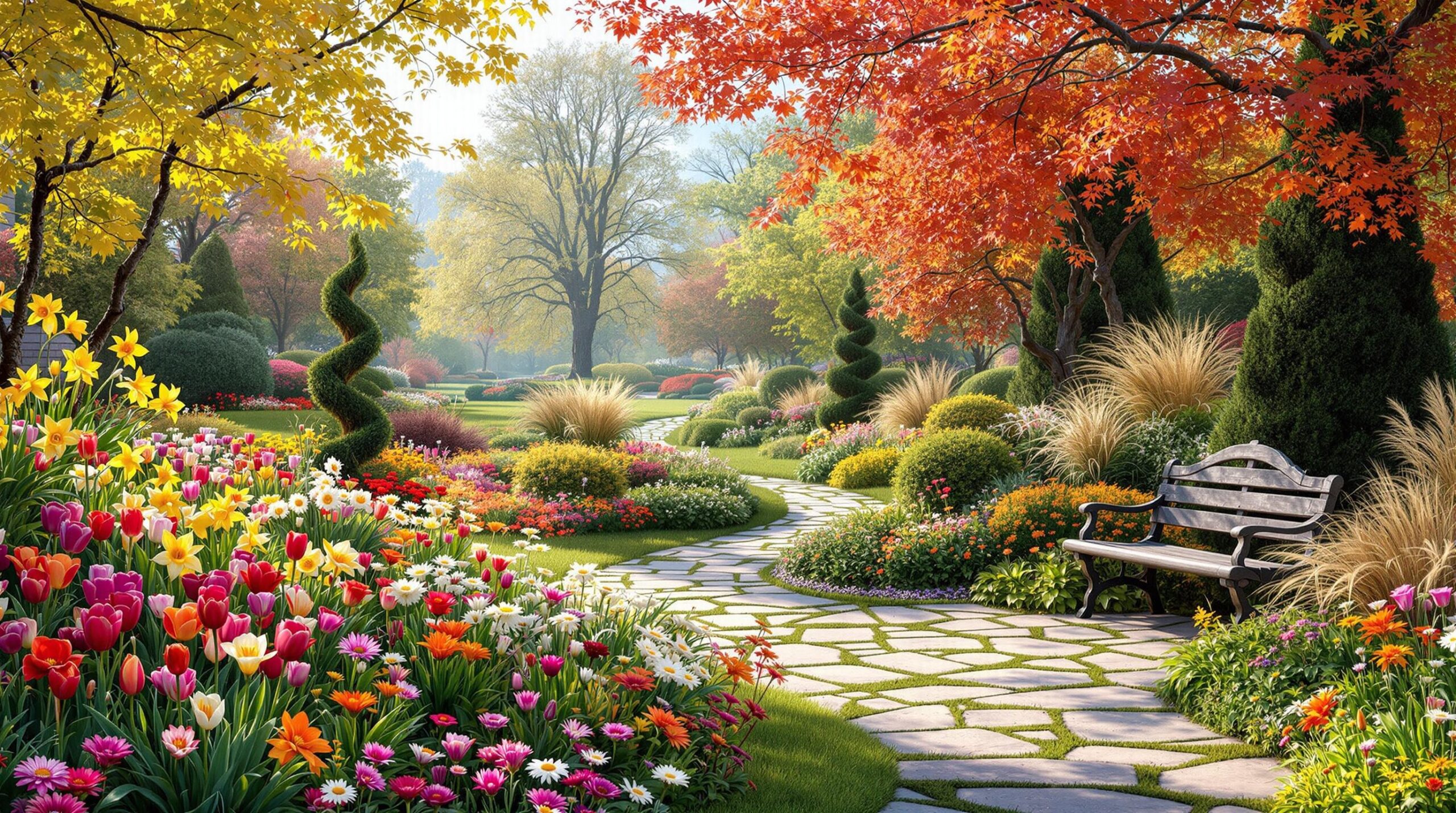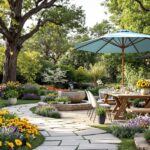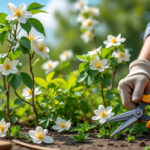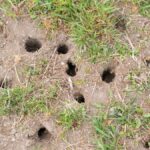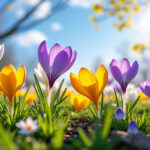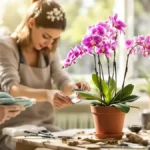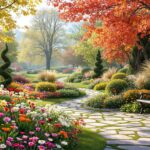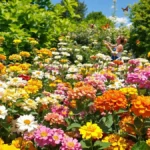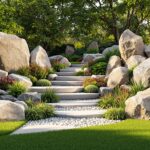Creating a breathtaking garden that flourishes throughout all seasons is an exciting venture! With a little planning and the right plant choices, you can develop a landscape that showcases seasonal beauty all year long. From selecting evergreen plants to layering blooms, this guide offers strategies for weaving together a vibrant tapestry of flora that delights the senses and enriches your outdoor experience.
- Understanding Seasonal Garden Basics
- Essential Design Elements
- Structure With Evergreens
- Layered Plant Combinations
- Plant Selection Strategies
- Spring Garden Planning
- Summer Color and Textures
- Fall Garden Transitions
- Creating Winter Interest
- Container Gardens Through Seasons
- Final Thoughts
Understanding Seasonal Garden Basics
A captivating garden engages visitors throughout all four seasons. Why should your outdoor space shine only during spring? It’s time to reimagine your landscape to create something extraordinary. With a thorough understanding of seasonal maintenance and careful planning, you can transform your outdoor environment into a year-round oasis.
Start with a garden planner app to effectively track and organize your plantings. Consider adding witch hazel to bring unexpected winter interest, providing a cheerful surprise amidst the cold. Simplifying your garden design helps reduce distractions, showcasing each plant’s beauty.
- Plan for continual blooms
- Integrate textures by combining broad-leaved and fine-needled plants
- Focal points like statues or water features can elevate your space
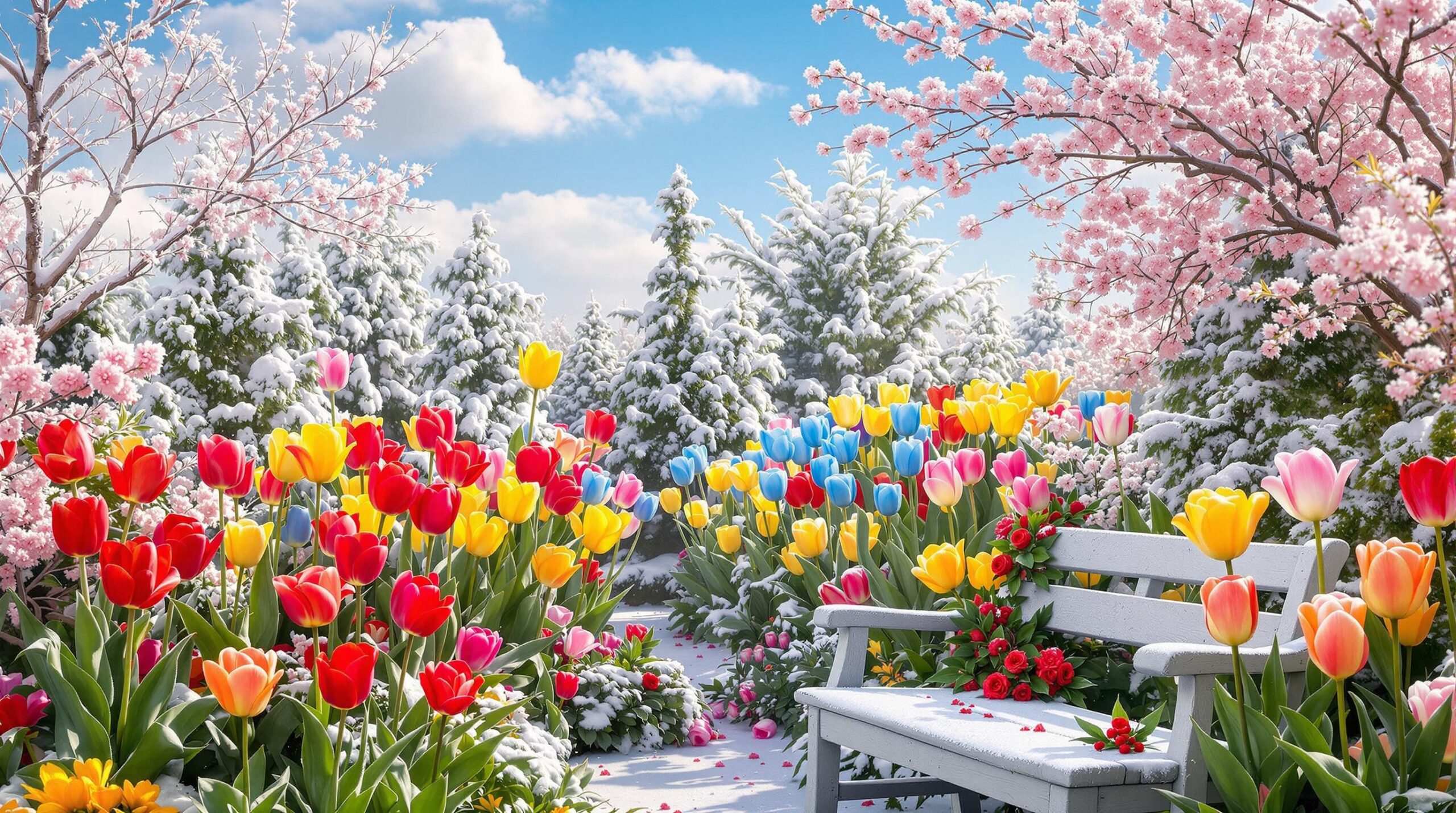
Essential Design Elements for Year-Round Greenery
To create a vibrant four-season garden, it’s crucial to establish a strong structural foundation with evergreens, which serve as the backbone of your landscape. Their resilience ensures the garden maintains a polished appearance even during winter’s dreariness. Thoughtful arrangement of plants at varying heights—tall conifers, mid-sized shrubs, and sprawling ground covers—will build visual layers, maintaining interest year-round.
| Design Element | Purpose |
|---|---|
| Evergreens | Provide structure and visual interest |
| Deciduous Plants | Add seasonal variability and beauty |
| Hardscaping | Enhances functionality and appeal |
Structure With Evergreens for Garden Harmony
Evergreen plants form the foundation of any seasonal landscape. They keep your garden lively and vibrant, even during the winter months. With a variety of choices available, you can sculpt a garden that embodies your vision while ensuring low maintenance.
For a dramatic effect, consider using towering Douglas firs to add height and presence. Combining broad-leaved evergreens with delicate fine-needled species will create dynamic contrasts that attract attention and enhance the rhythm of your garden.
Layered Plant Combinations for Seasonal Splendor
Layered plant combinations are crucial for cultivating a flourishing four-season garden. Start with early bloomers like tulips and daffodils, transitioning into vibrant forsythia blooms. Before planting, assess soil conditions to guarantee optimal growth. Follow the spring bloomers with summer’s bold performers like false indigo and hydrangeas.
- Spring: Tulips, Daffodils 🌷
- Summer: False Indigo, Hydrangeas 🌻
- Fall: Asters, Chrysanthemums 🍂
- Winter: Evergreens, Hellebores ❄️
Plant Selection Strategies for Year-Long Landscapes
To achieve vibrant and sustainable landscapes, consider these tips for plant selection:
- Embrace native species for local adaptability
- Incorporate a mix of annuals and perennials for continuous interest 🌼
- Focus on foliage and ornamental attributes as much as blooms 🌿
Utilizing reblooming plants and berry-laden varieties ensures your garden remains lively throughout the seasons. Don’t overlook the value of hardscaping as it forms the essential structure of your landscape, especially during winter months.
Spring Garden Planning for Perennial Paradise
The beauty of your spring garden starts long before the first blooms appear. Planning involves selecting early-flowering bulbs such as snowdrops, daffodils, and tulips to be planted in the fall. Outline your garden layout, focusing on where these stunning colors will emerge alongside other perennial blooms.
Early Bulb Selection Guide
- Choose quality bulbs: firm and heavy 🌱
- Optimal planting time: October to December
- Group bulbs for dramatic impact in sunny spots ☀️
| Bulb Type | Bloom Time | Notes |
|---|---|---|
| Daffodils | Early Spring | Great for sunny locations |
| Tulips | Early to Mid-Spring | Wide variety of colors |
| Snowdrops | Early Spring | Beautiful delicate flowers |
Summer Color and Textures in Seasonscape Creations
During the summer, your garden can be a vibrant tapestry of colors and textures. Rather than allowing your landscape to become monotonous, combine rich hues and striking contrasts. For instance, pairing golden roses with violet coneflowers creates a striking visual display that captures attention.
Tips for Summer Plant Combinations
- Mix architectural plants with mid-height blooms 🌺
- Add pollinator-friendly species such as Blanket Flower 🦋
- Incorporate rebloomers for extended color 🌼
Fall Garden Transitions for Seasonal Splendor
As autumn arrives, embrace the changes in your garden. This is the time when the foliage transitions to vibrant reds, oranges, and purples. To maximize this seasonal show, group plants in bold color swaths instead of scattered arrangements for a more impactful look.
Include ornamental grasses that sway with the breeze, adding movement and elegance. During cleanup, leave some seed heads intact; they not only look beautiful but also provide sustenance for winter wildlife.
Where to find large rocks for your landscaping projects
Creating Winter Interest in Your Landscape
Winter provides a time to rethink your garden. While many gardens may appear lifeless, yours can shine with carefully chosen plants. Incorporate evergreens, hellebores, and grasses that dance in the wind, ensuring that your landscape remains visually engaging even in the cold months.
- Leave spent flowers for wildlife 🦉
- Layer strategic plantings for visual insulation ❄️
- Embrace native grasses for winter beauty 🌾
Container Gardens Through Seasons for Year-Round Greenery
Container gardening offers flexibility and continuous design opportunities throughout the year. Applying the “thriller, filler, spiller” technique will yield eye-catching displays. Combine tall focal plants with colorful filling varieties and trailing plants that cascade over the sides.
Container Gardening Tips
- Use perennials combined with annuals for variety 🌿
- Incorporate herbs for added flavor and beauty 🌱
- Swap out seasonal plants to adjust displays ✨
By embracing the transitions of your garden and making strategic selections, you can create a stunning landscape that remains enchanting all year long.
FAQ
- How can I create a garden that looks good year-round? Develop a strong base using evergreen plants, incorporate seasonal blooms, and focus on textures for visual interest.
- What plants are best for winter interest? Choose evergreens, hellebores, and ornamental grasses that provide structure and beauty during the colder months.
- How do I plan for seasonal color in my garden? Execute color succession planning by mixing early, mid, and late-season bloomers to keep a colorful display throughout the year.
- What are container gardens, and how can I use them year-round? Container gardens allow for creative planting schemes; use a mix of perennials, annuals, and herbs that can be swapped out seasonally for new visual interest.

